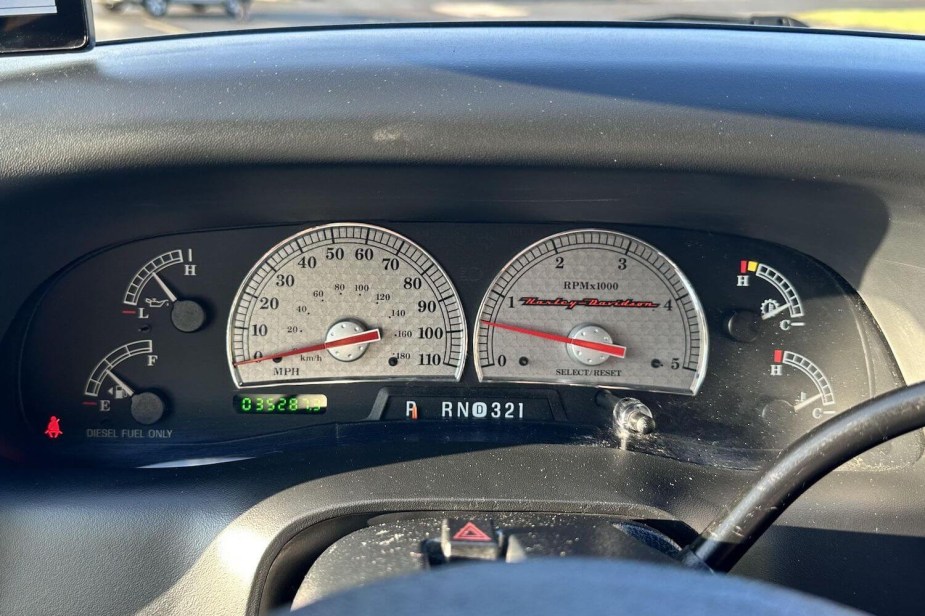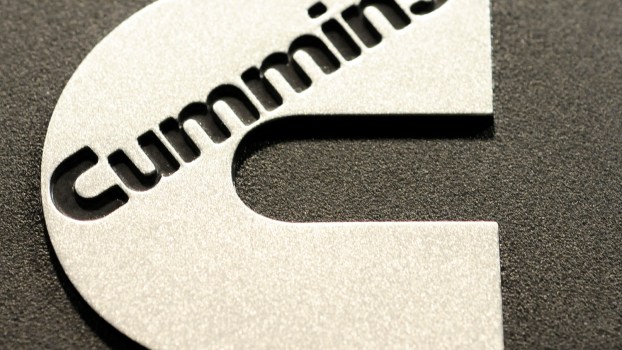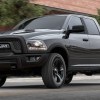
The Ultimate Guide to The 6.0-Liter Power Stroke Diesel in 2003-08 Super Duty Ford Trucks
The most generous way to describe Ford’s 6.0-liter “Power Stroke” V8 in its Super Duty trucks is as a necessary misstep in the evolution of Ford’s diesel engines. This engine incorporated multiple technologies that Ford simply couldn’t build reliably at the price point of a heavy-duty truck back in 2003. Tuning a 6.0-liter Power Stroke for a higher output can cause even more problems. But if you already have a 6.0, don’t fear: diesel truck enthusiasts are a resourceful bunch, and there are a few ways you can modify this Ford F-250 with a Power Stroke engine to improve reliability.
Is the 6.0 Power Stroke a good engine?
No. This diesel V8 objectively has more issues than similar engines from Chevy or Dodge. Before and after the 6.0-liter Power Stroke, Ford built other diesel engines that are probably a better choice for you. Consider the 7.3-liter Power Stroke (2003 and earlier) for better mpg or the 6.7-liter (2010 and later) for a reliable engine that will pollute less smog gas.

You can divide the problems with the 6.0-liter Power Stroke diesel V8 into two categories. Most problems affect stock engines. But some issues haunt Power Stroke owners who attempt to modify their 6.0 to increase its power. We’ll go into detail on both sets of problems and the best way to prevent them.
What year did Ford go to the 6.0 Power Stroke?
Ford swapped from a 7.3-liter diesel V8 built by International Harvester to the 6.0-liter Power Stroke halfway through the 2003 model year to meet new emissions regulations.

One little-known fact about the 6.0-liter V8 was that it was built by International Harvester. Ford first introduced an International-built diesel V8 in its 1983 Super Duty pickup trucks. But by 2003, it had shifted from branding these engines as “Internationals” to using the Ford Power Stroke name. You could also buy an industrial version of the 6.0 from International called the VT365.
International tuned its VT365 for reliability at the cost of power. But to compete with Dodge and Chevy’s diesels, Ford turned up the engine’s output to 325 horsepower and 570 lb-ft. Some claim this is the root of the 6.0’s problems. But the VT365 had plenty of issues of its own.
The VT365 (and the 6.0-liter Ford Power Stroke) struggled with oil-delivery problems. Debris or deteriorating sub-par O-rings can destroy either of its oil pumps (both a low and high-pressure unit). And when the finicky high-pressure pump malfunctions, it in turn can destroy expensive fuel injectors.
What are the worst 6.0-liter Ford Power Stroke problems?
Problems that plague stock 6.0-liter Power Stroke engines include oil delivery issues, EGR cooler and valve failure, turbocharger wear, and fuel injector controller module (FICM) malfunctions. Coolant and oil can also contaminate one another due to one of several possible issues.
As a result, diesel Super Duty trucks from 2003.5 through 2008 have a low resale value. Here’s an example, the 2004 with just 35k miles (pictured above) sold for $23.5k on Cars & Bids. Another 2004 with 50k miles couldn’t even sell for $17k.
6.0-liter Power Stroke EGR issues
The International and Ford versions of this 6.0-liter diesel V8 suffered oil delivery issues. But Ford also had to add an improved Exhaust Gas Recirculation (EGR) system for emissions reasons. Upgrading this emissions-regulation-driven technology was one of the main reasons Ford swapped from the 7.3 to the 6.0. But the new system was simply not reliable.
The EGR system takes exhaust gas and recirculates it through the engine to burn off any carbon. This theoretically improves both emissions and fuel efficiency, which should be a win-win. But exhaust gas is very hot, so the system needs to cool it using the engine’s coolant system. Then it needs to release a precisely measured amount into the intake manifold, mixing it with fresh air.
The 6.0-liter had problems with every step of this process. Exhaust gas is sooty, and carbon buildups can clog both the EGR cooler and the EGR valves. A failed EGR cooler can be one of several issues that causes coolant contamination. Some 6.0 owners install a better EGR system. Others throw up their hands and delete the system, which is an illegal modification. Modern Ford diesels have a much more reliable EGR system.
Ford 6.0-liter Power Stroke turbocharger issues
With its 6.0-liter Power Stroke V8, Ford pioneered an adaptive turbocharger. This technology uses a series of moving blades to control the amount of exhaust gas flowing into the turbocharger. This varies the speed of the turbocharger and how much it compresses the air flowing into the engine.
This is another technology that is now common, but Ford was unable to build both cheaply and reliably in 2003. Sooty diesel exhaust can gunk up the moving blades in the 6.0-liter Power Stroke’s turbocharger intake. When these blades get stuck open or closed it can make a 6.0 nearly undrivable.
The 6.0-liter Power Stroke’s fuel injector controller (FICM) can fail
Many 6.0-liter Power Stroke issues are due to necessary tradeoffs: Ford attempted to build an efficient engine with cutting-edge technology at a low price point. But the common failure of the 6.0’s fuel injector control module (FICM) was, sadly, preventable.

The engine’s fuel injector system is controlled by a FICM, which Ford mounted to the top of the engine, right next to the turbocharger. The turbocharger, predictably, throws a lot of heat. This can cause the FICM to fail early. When the module fails, it can sometimes destroy expensive injectors. But usually, the truck just stops running until everything cools down–according to Vehicle Service Pros.
This specific control module can also fail or break permanently when the battery gets too low. This is another preventable issue that Ford corrected on later engines.
What is the gas mileage on a 6.0 Power Stroke?
One of the most tragic aspects of the completely redesigned 6.0-liter Power Stroke is that it didn’t improve on the outgoing 7.3-liter V8’s fuel mileage. In fact, the 7.3 can get up to 20 mpg while cruising on the highway. But the 6.0 will likely never do better than 17 or 18 mpg.
Why is that? Many of the modifications Ford made to its diesel engines for 2003 were not designed for power or efficiency but to reduce the emissions of a smog-causing gas named nitrogen oxides (NOx), which the EPA cracked down on in 2003.
When did they stop making 6.0 Power Stroke?
So many Ford truck buyers complained about the 6.0-liter Power Stroke that the automaker pivoted away from the engine in just 4.5 years. By the 2008 model year, Ford began to offer its Super Duty trucks with an all-new 6.4-liter Power Stroke diesel V8 instead.
While Ford did correct some of the 6.0’s issues with its 6.4-liter engine, many Ford diesel fans prefer the 6.7-liter version of the legendary Power Stroke diesel engine introduced in 2010. The 6.7-liter received a fraction of the complaints that both the 6.0 and the 6.4 were subject to. The 6.4 and 6.7 improved on the 6.0’s power output numbers while continuing to meet modern emissions regulations.
Because of the way diesel fuel combusts, diesel engine designers need to make some tradeoffs between power, mpg, and NOx emissions. This is why pre-2003 diesel trucks get better mpg than later trucks. By the early 2010s, most manufacturers could build reliable diesel engines with better mpg while meeting the stricter NOx regulations. But the 6.0-liter Power Stroke came during the darkest age of diesel.
Can you tune a 6.0-liter Power Stroke?
This is probably a bad idea. Not only will you exacerbate every other reliability issue the 6.0-liter Power Stroke is known for, but you will create new issues. Namely, the reduced number of head bolts holding the 6.0-liter engine together is insufficient to keep the head gasket from leaking if you increase the power. To be blunt, Ford already tuned an International Harvester engine to create the 6.0 and pushed the diesel V8 to its limits.

Though you probably don’t want to increase a 6.0-liter Power Stroke’s output, you may be able to modify it for reliability. But first, you’ll want to keep up with the engine’s maintenance. Driving Line recommends swapping both fuel filters every 15,000 miles. It also suggests oil changes every 5,000 miles and using the highest quality replacement oil available. High mileage 6.0-liter Power Strokes should also have their antifreeze coolant flushed every 45,000 miles. Because a worn battery can destroy the FICM, you’ll also need to keep the truck’s two batteries fairly new. Finally, you’ll want to have the EGR system’s valve cleaned and inspected every 20,000 miles.
Note that all the problems caused by exhaust soot (namely EGR cooler failure, EGR valve failure, and turbocharger blade fouling) are worse on trucks that idle a lot. If you must leave your 6.0 idling for hours, you’ll want to inspect these components more often.
One reliability modification is Ford’s “blue spring kit” (PN 3C3Z-9T517-AG) which increases the fuel’s pressure at the injectors by 10-15 PSI and may help the injectors last longer. Many 6.0-liter Power Stroke owners also install an aftermarket coolant filter. Others swap out the engine’s entire EGR system for a beefier aftermarket one. Many 6.0-liter fans swear by an aftermarket coolant additive to prevent the liquid from doing what’s called “cavitating.” And 6.0-tuners who do increase the power often upgrade the head bolts to head studs first.
Next, read about the best truck engines ever made or learn more about the 6.0-liter Powerstroke’s problems in the video below:







